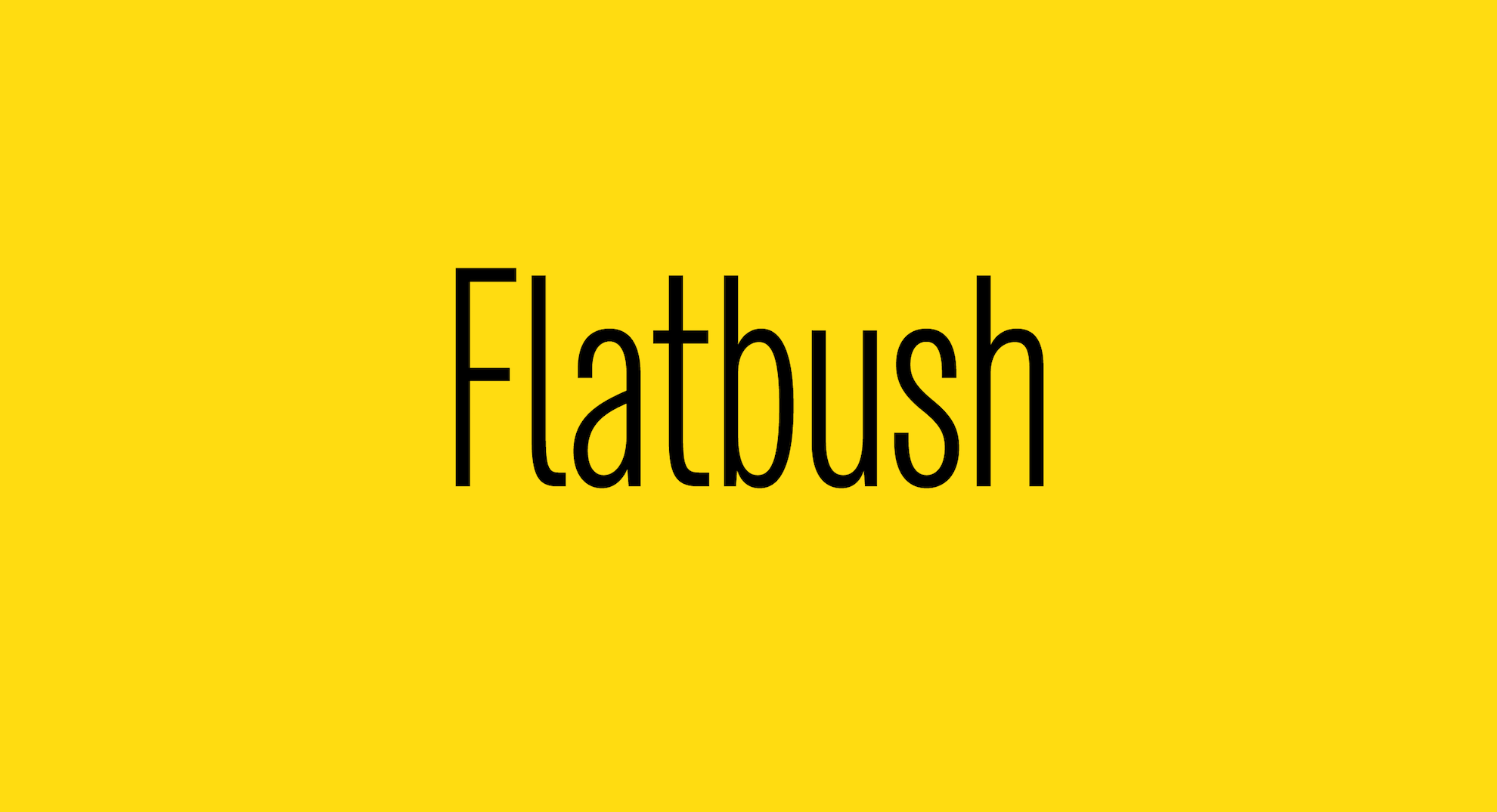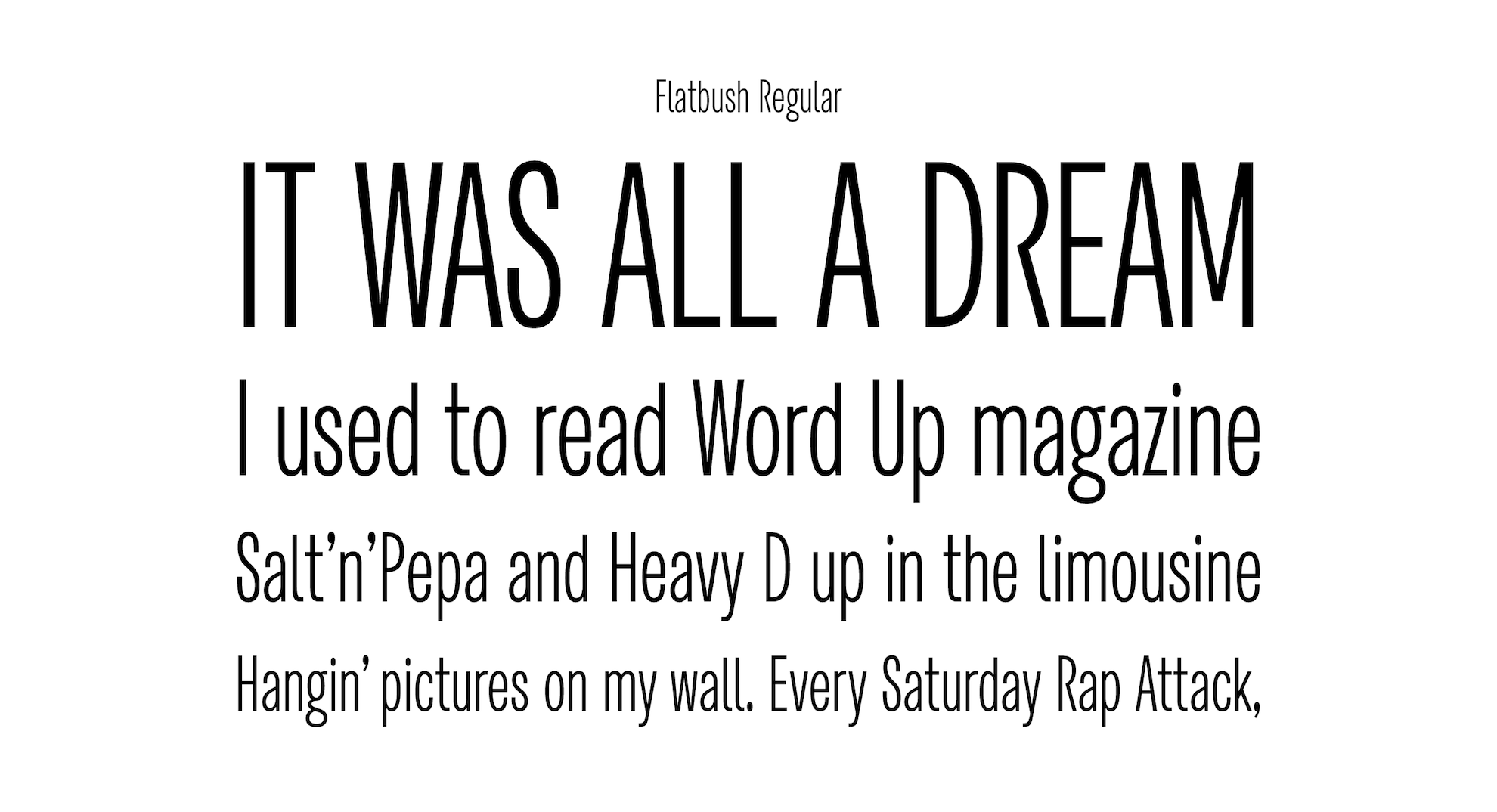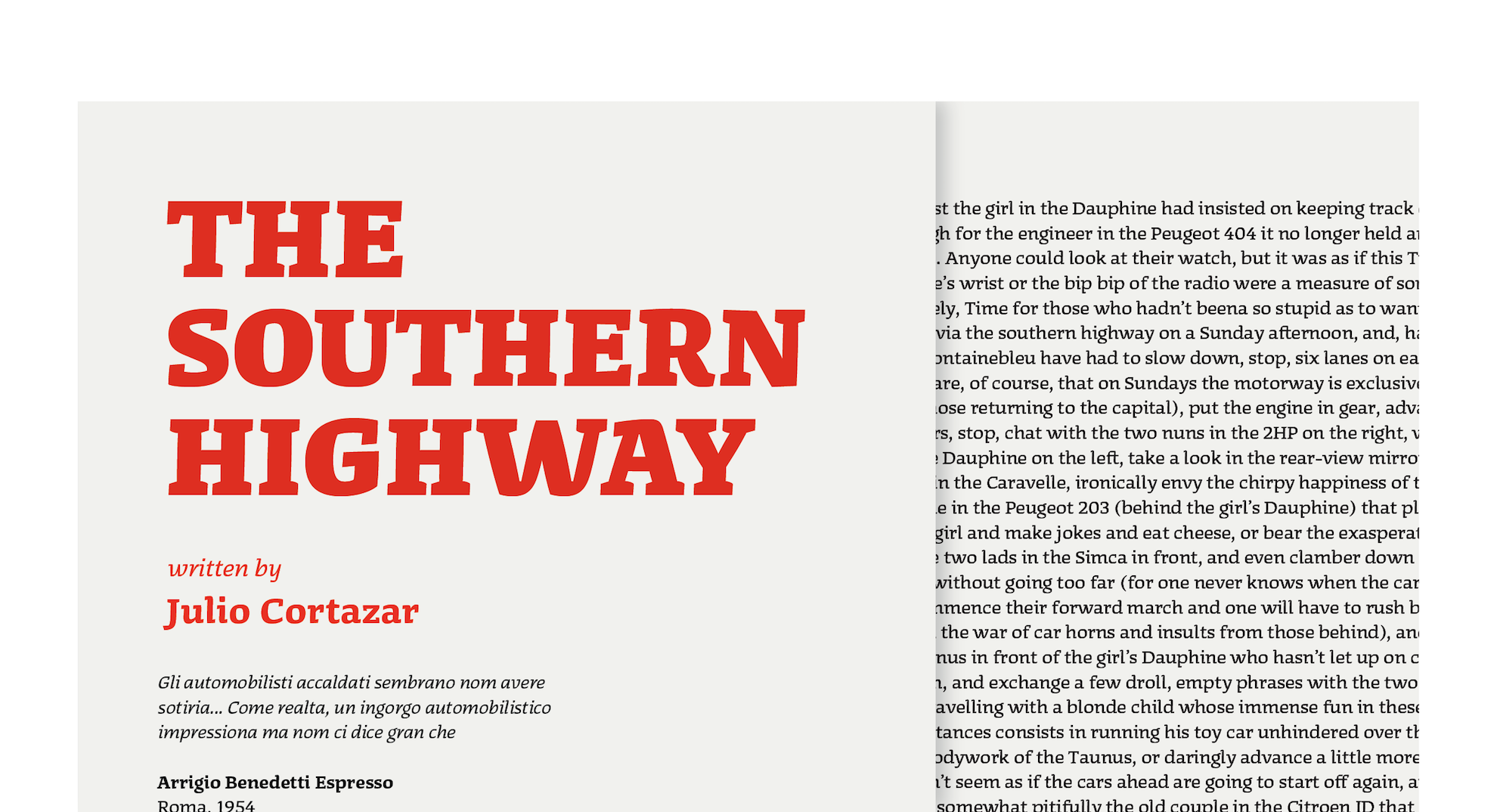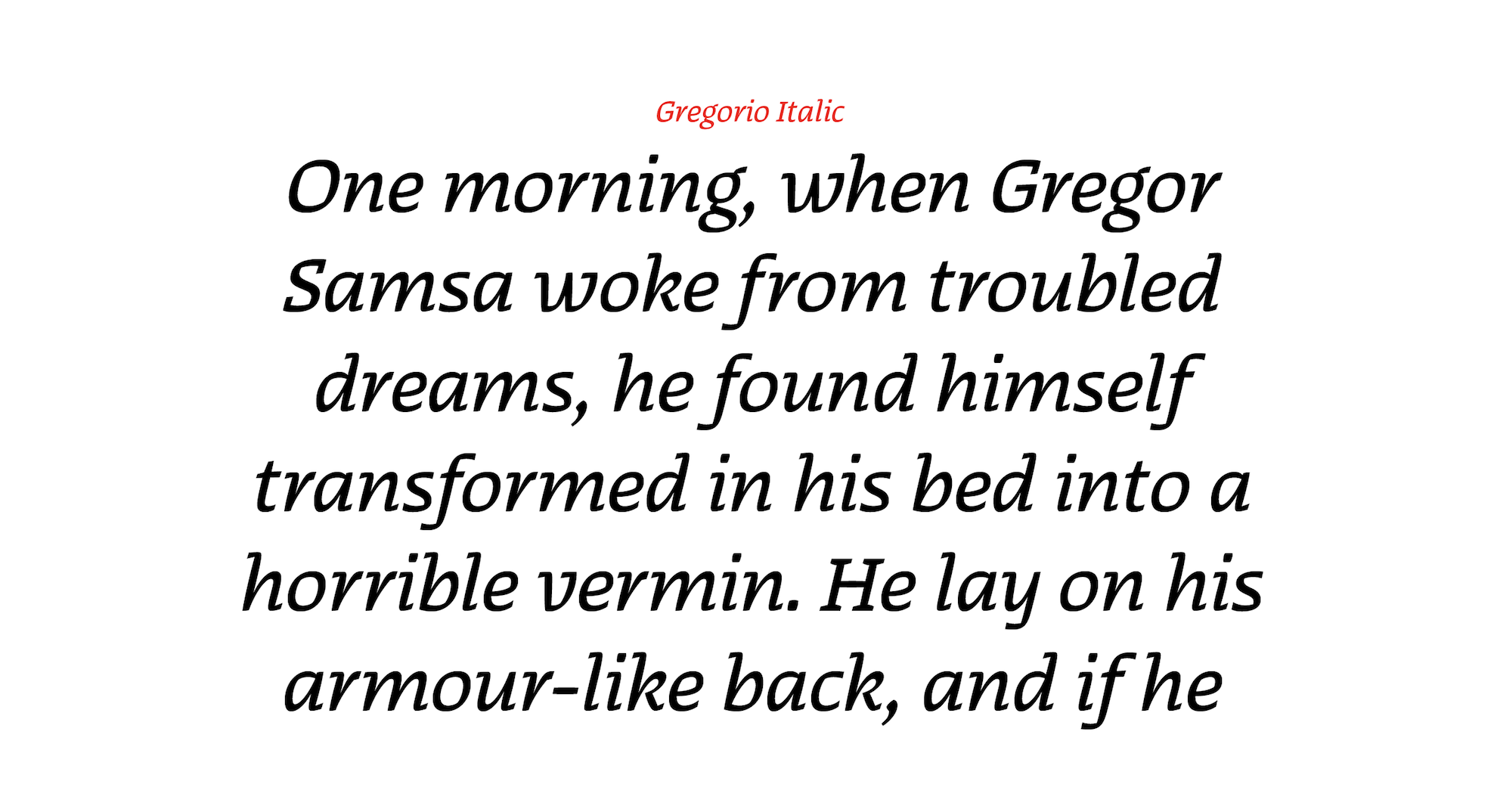Congratulations on your first year at Monotype! What has it been like for you? Can you tell us a bit about your day-to-day process in designing/drawing?
Thank you! It’s been like a dream come true. I still pinch myself every morning. Finding a full-time job doing typeface design is like finding a unicorn. Drawing type is a really sweet gig. I love Monotype because from the beginning, they have been very supportive of my personal growth as a designer and educator.
It’s funny to reflect on the day-to-day process, because all type design projects are long-term. So, my daily routine mostly involves a glass of cold-brewed coffee, an engaging podcast, and a character set that needs to be filled-out or revised depending on the project and its current stage. I’m lucky to be part of a large team of incredibly talented type designers with whom to bounce ideas and get feedback, whether they are here in the New York office, across the United States, or around the world.
 This typeface was conceived in Flatbush Brooklyn.
This typeface was conceived in Flatbush Brooklyn.
I’m currently collaborating on a project with the Asia team and it’s great because of the time zone difference. I usually get their feedback by the time I’m going to bed, which means that I can read it and literally sleep on it until the morning. When I get up, I can continue to work while they’re asleep.
Apart from that, we have two weekly meetings. One is formal, where we discuss our current projects, ask for specific feedback, and receive new project assignments. The other one is more casual, like a virtual hangout session. We leave our cameras on and catch up with each other while we work. It’s great because although there is no pressure to talk about work, all of the roads lead back to type.
That sort of camaraderie is hard to find and it’s something I love about the team. Most importantly, we all share the same love and passion for type, which is what keeps us together. In every sense, it’s been an amazing experience so far.
 Flatbush was inspired by the condensed signage on the side of vehicles and stores seen throughout NYC.
Flatbush was inspired by the condensed signage on the side of vehicles and stores seen throughout NYC.
Earlier in your career, you worked in motion and videography. Are there any parallels with that type of work and type? Does it partly inform how you think about letters?
No matter what I’m designing, it’s all about the process, how that process informs the result, and vice-versa. Motion graphics and videography are both very time-consuming and labor-intensive. Usually, they are short-term projects requiring a lot of preparation up-front. It’s like a sprint. Typeface design is more like a marathon, but one in which you’re training and racing at the same time. You get faster and better at pacing and editing yourself the more you do it. Sometimes it’s hard to see the finish line, if there is one at all. But honestly, I get a kick out of every step of the process.
Actually, it was my fascination with cinema, film titles and the process behind them that got me into type in the first place. My first type experiments in college began that way. I wanted complete control of the film titles, so I started drawing my own letters and fell in love with that part of the process. Eventually, this led me to enrolling in lettering workshop at Type@Cooper and attending the Extended program right after college.
Every job I’ve had so far has informed my process and the way I think about typeface design. For instance, while I was attending Type@Cooper, I got a job working at a gaming company doing localization work. I designed logotypes in English and Chinese and did lots of typesetting in twelve different languages. Looking back, it was the perfect job for me at the time. The office was only a couple of blocks away from Cooper Union, so I became familiar with every coffee shop that had good wifi, strong coffee, and enough available outlets where I could plug in my laptop and continue working on type before heading home.
I’m the kind of person who likes to figure things out by poking at problems from many different angles. I enjoy learning new skills that I can improve on my own and potentially bring into my professional practice. I recently took time off from work to attend the Typographics conference and take workshops on sign painting and Drawbot animation. I want to experience all the possible ways to make type.
 Gregorio is a semi-serif typeface based on broad nib calligraphy. Designed as a text face for short stories and novels, it has enough character to also perform as a display face on headlines and film titles.
Gregorio is a semi-serif typeface based on broad nib calligraphy. Designed as a text face for short stories and novels, it has enough character to also perform as a display face on headlines and film titles.
You’ve been an active member of the TDC for several years now. I always see you at a wide range of talks and salons. What compels you to keep coming back to the TDC?
The bread sticks! Seriously though, as a long-time member, hanging out in the back by the wine table is where I catch up with and meet new type buddies. It’s a good ice-breaker. In addition, the TDC always has some kind of exhibit going up, so if you’re not feeling too social, you can always just enjoy looking at type with a glass of wine before the talk begins. Last but not least, the TDC talks happen quite frequently and they always manage to bring interesting speakers to talk about type. I don’t know how they do it, but I always have a good time at the TDC. By far, the TDC is probably the best club out there.
 The font name comes from Gregor Samsa, Kafka’s protagonist in The Metamorphosis. I like to think of Gregorio as his South American double, who has accepted the agony of his own existence, in a place where one is either a serif or a sans.
The font name comes from Gregor Samsa, Kafka’s protagonist in The Metamorphosis. I like to think of Gregorio as his South American double, who has accepted the agony of his own existence, in a place where one is either a serif or a sans.
Links:
Website: http://www.juankafka.com/
Twitter: @Juan_Kafka
Instagram: @juan_kafka
Tumblr: http://minussleep.tumblr.com/
